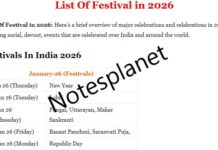Indus Valley Civilzation
The Discoverers of Indus Valley Civilization
- John Marshall — He had been the DG of both ASI in 1927 and first pro Archaeologist of India.But that he excated horizontlly and finds were grouped together when they were discovered in different stratigraphic layers. This caused loss of very valuable advice about.
- Alexander Cunningham — He Had Been the Initial Director-General of ASI.
- R.E.M. Wheeler — He followed the stratigraphy of excavations rather than simply excavating horizontally.
Fundamental features of Indus Valley Civilization
- The Indus Valley civilization is the earliest known Urban Culture in India.
- They also constructed double storied homes of burnt-bricks full with bathroom, kitchen, and a nicely.
- This civilisation is credited for building towns complete with: town planning, sanitation, drainage system and wide well-laid roads.
- Their Walled cities had significant buildings such as, the Great Bath, Granaries and the Meeting Halls.
- Thier Agriculture was believed important job for rural areas.While that the City inhabitants were involved in internal & external trade which led to developed contacts with other civilizations ( e.g. Mesopotamia).
- Harappans were exceptional potters as is evident by their artifacts.
- Also, Shell, ivory, bone and faience were used as substance for unique crafts.
- Harappans also had technical understanding of metals & process of alloying (e.g. bronze sculpture of dancing women found in Mohenjodaro).
- Here, Lothal deserves special mention as the website for dockyard. It’s situated in Ahmedabad, Gujarat.
- Other important mentions were- Dhaulavira (Guj.)
- Harappans utilized to worship plants, animals and the forces of nature.
- Harappan script is yet to be deciphered. Thus, our understanding of Harappan culture is solely based on archaeological evidence alone. They understood the craft of spinning & weaving.
- They also worshipped male god including Lord Shiva of later occasions and also a mother goddess.
- The picture of’Peepal’ shrub is found depicted on many seals.
- They also likely believed in life after death as well as in charms and spells. This implies that these creatures were considered sacred.










